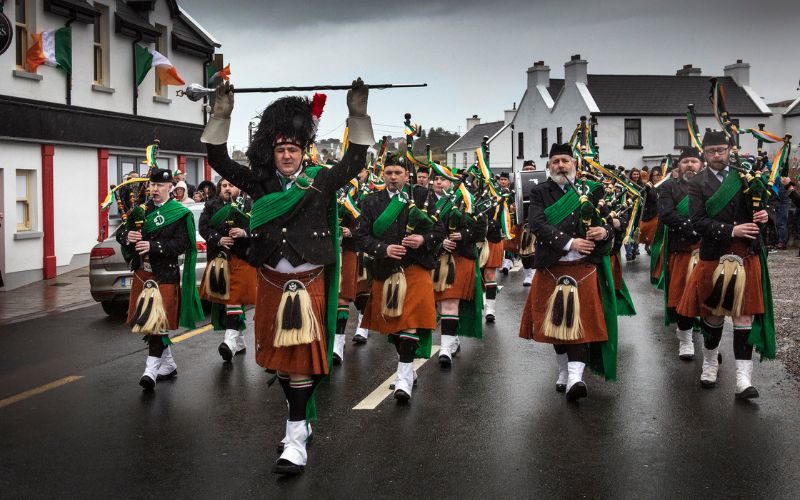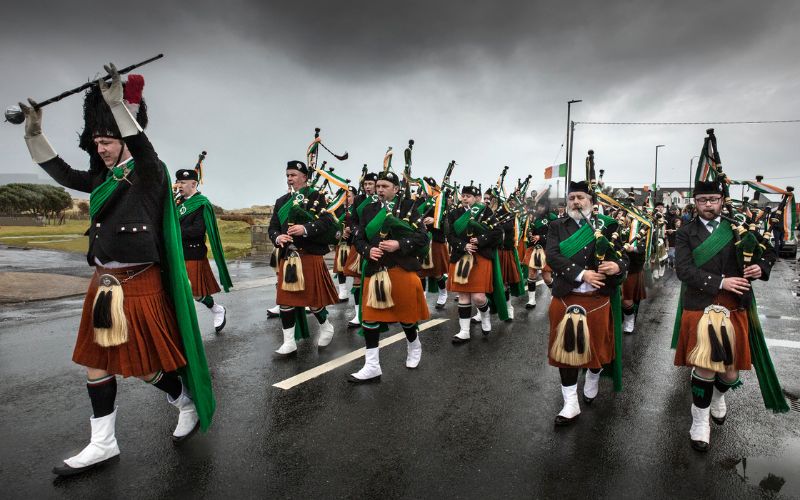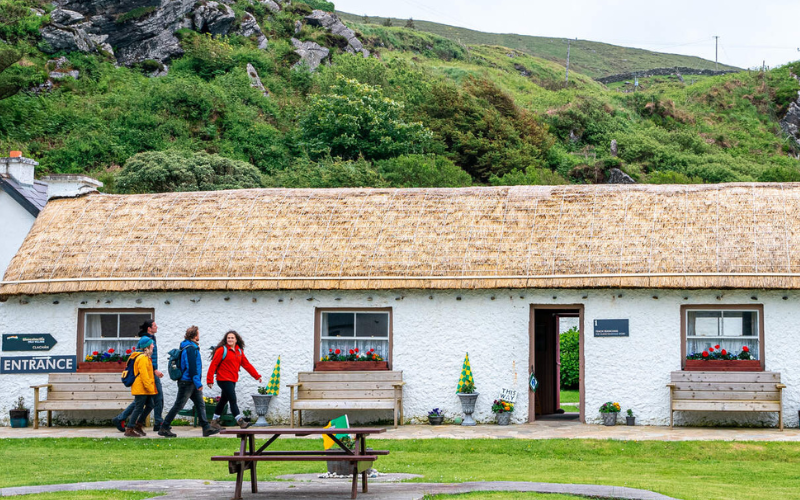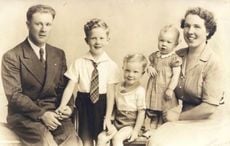Every March 17th, as first light glistens on Achill Island’s windswept shores, a powerful drumbeat ripples through the narrow lanes.
One by one, pipers and drummers shake off the chill and step out in full regalia, drawn by a tradition that has pulsed in this rugged place since 1882.
It is St. Patrick’s Day in Achill—where heritage, music, and community come together in one breathtaking celebration.
The origins of this event can be traced back to 1882 when a determined local priest urged his congregation to properly honour the 1,550th anniversary of St. Patrick’s landing in Ireland. In response, a small group of men formed a fife and drum band, notably featuring a homemade bass drum.
At dawn on that first St. Patrick’s morning, they set out from Molly’s house in Dooagh—the island’s most westerly dwelling at the time—marching five miles to Dookinella Church for Mass.
It was a humble beginning, but one that ignited a tradition that continues to burn brightly today.

Pipers on Achill Island. (Glen McClure)
That flame faced its greatest test during the War of Independence when public gatherings were forbidden. Undeterred, the islanders found a way to defy the ban—letting a single “Big Drum” resonate across the settlement to summon the musicians.
Even now, at 6 am, the steady beat of the Big Drum echoes through the dawn—a steadfast reminder of that defiant spirit, calling all to rise and march.
Over the decades, Achill’s fife and drum bands evolved into pipe bands, expanding from three to five. Emigration in the 1950s and 1960s often scattered band members to construction sites in Britain. Even so, they found ways to return for St. Patrick’s Day—some saved every spare penny for the trip, others took a risk by leaving jobs behind, and there were those who famously claimed they had turf-cutting to do just to get time off. Many a young musician would practice through the winter, hopeful of stepping into a returning emigrant’s uniform or place in the band—only for the uniform’s owner to arrive on the last bus on March 16.
With modern travel, it is easier for Achill’s diaspora to return, yet the spirit remains the same. The day’s celebrations begin with each of the five pipe bands converging at Pollagh Church—built in 1929, and thus not part of the original route.
Before and after Mass (celebrated in Irish), each band performs in turn, echoing across the church grounds.
Then they continue along the old route to Dookinella, just as those first islanders did all those years ago, where the stirring highlight awaits: more than 120 pipers and drummers form a massive circle and merge into one mighty spectacle.
The visual impact and the soul-stirring sound linger in your ears—and heart—long afterward.

Pipers on Achill Island. (Glen McClure)
Away from the parades, the day is also a time for remembrance. Bands make stops at the homes of community members who have died in the past year, paying their respects with solemn performances. Many longtime and past band members are honoured in the same way, their memory carried on in music at their doorsteps.
The flood of recollections—where one stood, who one marched or talked with on St. Patrick’s Days past—combines bittersweet sorrow with the warmth of shared history.
In Achill’s lively pubs, those memories blossom into laughter and tall tales, forging new bonds among old friends and strangers alike.
The year’s festivities have been heightened by a musical addition: The Achill Lads, Michael Lavelle, and Cian McNamara—both proud band members—released a song penned by me, a former pipe band member.
“The Big Drum’s Beating (St. Patrick's Day)” is accompanied by a moving video that captures the raw beauty and remoteness of Achill Island, as well as the bright spectacle of the pipe bands.
The song has climbed to number one on the iTunes Irish Country Music Charts - its success suggests that the spirit of Achill’s St. Patrick’s Day, and all it represents, resonates well beyond the island’s wild coastlines.
Ultimately, there are no grand floats here—only five dedicated pipe bands, children from the local schools, and a wealth of shared memories carried forward by the rolling drumbeat and the soaring wail of bagpipes.
In Achill, the tradition is both powerful and personal: multiple generations of a single family might march side by side, forging bonds and building memories, as if in step with every Achill marcher before them.
On this distant Atlantic isle, St. Patrick’s Day is not a mere holiday. It is a reunion, a celebration, and a sacred touchstone of who the Achill people have been and continue to be—past, present, and future.




Comments